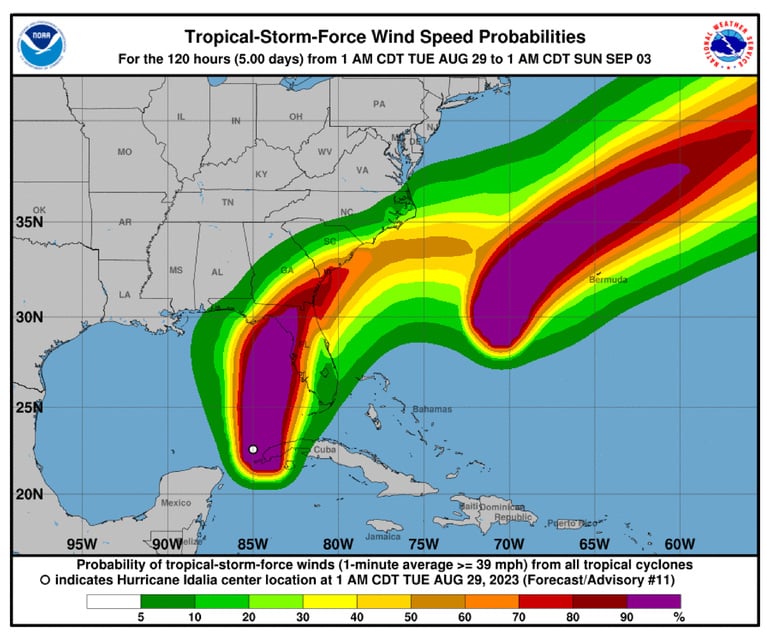Many, if not most, adjusters may feel confident that they rarelywill have to deal with serious hazardous material claims. Afterall, unless their insurers write environmental impairment liabilitycoverage or their self-insured clients are in businesses that mightinvolve chemicals or other pollutants, there are those delightful“absolute pollution exclusions” in the policies. Right?
|Not always. It is true that those exclusions are pretty solid.The one in the CGL policy goes on for more than a full page of fineprint defining and listing exceptions to the exclusion of any“bodily injury or property damage arising out of the actual,alleged, or threatened discharge, dispersal, seepage, migration,release, or escape of pollutants.”
|Back in the 1970s, when I taught a coverage class, I used tohave the pollution definition memorized. I called it the McDonald'sExclusion. It includes “any solid, liquid, gaseous, or thermalirritant or contaminant, including smoke, vapor, soot, fumes,acids, alkalis, chemicals, and waste,” to which I always added(reflecting the then current McDonald's ad), “on a sesame seedbun!” Come to think of it, some fast food I have encountered doesresemble that definition, considering what goes into the meat,lettuce, catsup, pickle relish, and mustard.
|For those of us who are coverage gurus and sit around dreamingup ways of getting around anything labeled “absolute,” there aremany loopholes and, sooner or later, an insured is likely to findone. Even the adjuster who handles nothing but auto collisionsunder Personal Auto Policies (which do not have pollutionexclusions) may some day encounter a hazmat loss of remarkableproportions.
|Dewey, Skinnem & Howe
|Back in February of 1993, in a series on E&O Loss Preventionand a column entitled, “I'm In Charge Here,” I described poor oldJoe Doaks of ABC Ins. Co., who had the misfortune to answer thephone one Friday afternoon before a three-day holiday. It was aninsured for a truck line, with a $100,000 liability policy, callingin a claim of a wreck that had just occurred on the Interstate justoutside town, where a tank load of methylethylgopuline was flowingdown an embankment into a local creek that fed the city waterreservoir, and the tank was about to BLEVE. (You hazmat guys willknow what that means: a boiling liquid evaporation explosion.) Thehighway was shut down and the EPA was on its way. What did Joe wantthe insured to do? What would you do?
|“Not to worry,” said Joe. “I'll take charge of it for you.” Hecalled a local pollution clean-up firm. “Dewey, Skinnem & Howe,pollution engineers,” said the voice at the other end of the line.“You dump 'em, we pump 'em. Guaranteed to clean out your walletalong with the spill. Dewey here.”
|“Oh, Mr. Dewey, this is Doaks at ABC Insurance,” said Joe,telling him about the mess on the Interstate. Dewey, of course, wasquite happy to take care of everything for Joe. And he did. Abouttwo weeks later Joe was sitting at his desk when the secretary ranup and said, “Mr. Doaks, there's a delivery for you up front.”Doaks went to the reception area, and there stood a guy with aclipboard.
|“You Doaks?” he asked, and Joe nodded. “Sign here,” he said, andJoe signed the form. “Okay, guys, bring it in.” Six guys came inwith handcarts loaded with boxes. Meanwhile, Joe's boss wasstanding in his doorway, arms folded, watching all this go by. AsDoaks led the way back to his cubical, the boss asked, “What theheck is all this stuff, Doaks?” Well, what was it?
|It was the bill, of course. About $2.2 million for the cleanupand remediation, required to meet the EPA's and the local waterdepartment's satisfaction. And whose name was on it? Doaks and theABC Insurance Co. Should Joe have sent it to his insured along withthe insurer's $100,000 check?
|What's in a Tank Car?
|Few of us live very far from a railroad line. There no longermay be passenger service on whatever lines run through or near ourhome towns, but with the consolidation and mergers of hundreds ofrailroads down to about seven major systems, plus a bunch ofregional or local lines, most of us will find ourselves sitting atcrossings while a couple of miles of coal hoppers, box cars, autohaulers, or tank cars slowly drag themselves across the roadway.Always a big nuisance, unless you are a railroad buff.
|Of railroad industry cargo and revenue, coal constitutes roughly44 percent of the tonnage and a bit more than 21 percent of therevenue, reported Gregory D. L. Morris, formerly an editor forChemicalweek, in the November 2004 issue of Trains. Only 9 percentof tonnage is chemicals, but petroleum increases that by 12percent, comprising nearly 13 percent of rail revenue. Railroadshaul far more chemicals, much of it considered hazmat, than dotrucks, barges, or pipelines. Major chemical centers includeHouston, Baton Rouge, the Delaware River area, and Sarnia/PortHuron, from which tank cars are going everywhere. What is in them?Nice delightful soups including diammonium phosphate, sodiumhydroxide, sulfuric and hydrochloric acids, anhydrous ethanol,liquefied chlorine gas, and a wide variety of other explosive,flammable, and deadly gasses, liquids, and solids.
|Are they safe? You bet. Sure, every now and then, we read aboutsome area being evacuated because a train has derailed and it hadchemicals aboard, but it is news because it is a rare occurrence.“With federal regulations governing movement and rolling stock, andsafe-handling programs sponsored by shippers and railroads,” saidMorris, “there is no safer way to move chemicals than by rail.” TheAssociation of American Railroads “estimates that divertinghazardous materials shipments from rail to truck would increase therisk of a chemical release attributed to an accident by a factor of16,” he noted.
|The problem with all this is the grade crossing. There arethousands of grade crossing accidents annually around the country,most involving either large trucks or private passengerautomobiles. (A surprising chunk are school buses.) This writer wasa passenger on Amtrak's Sunset Limited on the way to Los Angeleswhen some idiot drove his camper into the side of the train. Inbroad daylight. No injuries, not much damage to the train, but thecamper was a mess.
|Now, let us propose that instead of my comfy passenger car, ithad been a tank car full of some horrifying chemical that the idiothad crashed into, puncturing the double-lined steel tank. How farwill the idiot's $25,000 property damage coverage go for thecleanup of such a mess? Can the adjuster for the idiot's insurersimply send a check to the railroad and forget about it? Will therailroad give us a release for the $25,000? (I hope that some ofyou readers who have handled such claims will respond and tell uswhat you did, or didn't, do.)
|Any accident involving hazardous material is serious. Obviously,the carrier, be it a truck, railroad, or barge, has the primaryresponsibility. It must be “in control.” It is the local firedepartment, EPA, Coast Guard, or other governmental agency that is“in charge,” mandating what must be done, regardless of cost. Theshipper, likewise, has exposure, and all entities are going to seekout any potential contributing tort feasor to bring to the party,if at all possible. Any insurer or self-insurer of a vehicle of anytype has exposure.
|The matter is one of concern for the public, hence involvementof governmental bureaucracy, federal, state, and local. It is thelocal fire department that will respond first, and the carrier hadbetter have one of those diamond-shaped identification placards onthe tank to tell the local guys what is leaking and whether it isexplosive, flammable, or toxic so that they can contact Chemtrecand find out what to do about it. Next the state and the feds,including the EPA and the Surface Transportation Board, will getinvolved.
|Whom should the adjuster contact for information and lossstatus? Morris cites the “Ballad of Texas Regulations” in hisarticle. “Texas,” he said, “has had six different sovereigngovernments, and its regulatory structure is still famouslyconvoluted, except for chemical manufacture and distribution.”
|Prior to the creation in 1992 of the Texas Natural ResourceConservation Commission (the TNRCC, which, he said, is pronouncedtrain wreck), to which any type of environmental impact situationis reported, “the bizarre jurisdictions defied the imagination.”Morris said. “If it leaked into the water, you called the LandOffice. If it leaked onto land, you called the Water Board. If itleaked out of a pipeline, you called the Railroad Commission. If itleaked out of a railroad car, you called the Air Board. If itleaked into the air, you called the Board of Health.
|“You cannot make this stuff up,” said Morris, “but perhaps someold railroader can set the words to a mournful harmonica tune.”
|Chemtrec: 24/7 Help
|For the spiller, the carrier, the local volunteer or city firedepartment, and for the bewildered adjuster saddled with a hazmatclaim, there is a vital resource of information available, createdby the U.S. chemical industry and called Chemtrec. “The AmericanChemistry Council, under a previous name, launched Chemtrec in 1971as an industry resource, not a formal reporting network,” saidMorris. “That task falls to the National Response Center, run bythe U.S. Coast Guard. In Canada, the Chemtrec analogue is Canutec …[and in Mexico] the Asociacion Nacional de la Industria Quimica(Aniq).”
|The concern over hazmat spills and accidents is international.More than 10,000 chemical industry customers subscribe to Chemtrec,which may receive up to 200 calls a day. Most of these, are minor,such as a spilled chemical drum, “but all too many were serious,”Morris noted. By the coding on those placards, Chemtrec can advisewhat it is, perhaps who made it, what its properties are, and howto clean it up.
|The chances that hazmat losses will diminish in the 21st Centuryare doubtful. If anything, the United States is becoming ever morereliant on chemicals, including everything from food supplements tothe ingredients of plastics. Things that we might not think of ashazardous may turn out to be. I recall one major truck/train wreckin which the truck was a tanker full of chocolate syrup. What asweet mess that was. Try shoveling that up on a hot day.
|Every issue of Firehouse Magazine (Cygnus Business Media)contains a column called “Firewire,” listing the latest month'smajor fire service calls. About a quarter are hazmat losses. InAugust of 2004, for example, these included a natural gas wellexplosion, an overturned tanker containing 11,400 gallons ofgasoline that spilled onto the highway, a leaking propane gas tank,explosion of an underground gas storage facility, a chemicalexplosion in a part factory, and a collision of a ship containing643,000 gallons of crude oil with a ferry dock. How many claimsarising out of these calamities might have been excluded by theabsolute pollution exclusion?
|Every claim eventually will boil down to three elements:coverage, liability, and damage. Whether the claim is a bent fenderor a leaking railroad tank car, the adjuster must be prepared toact, but must also keep in mind that he is not “in charge.” Theultimate responsibilities lie elsewhere, with the insured, thecarrier, the fire service, or the government.
|Poor Joe Doaks did not understand that. He thought that he wasin charge; he took over, hence, he got the bill. Nevertheless, theadjuster must exercise control of the claim itself. That control isthe investigation, evaluation, and negotiation that resolves everyclaim. When the phone rings on a Friday afternoon and the insuredconfesses to having just caused the derailment of a chemical train,do not panic. But do not promise to act, for it is doubtful, unlessyou are the railroad's risk manager, that you are in charge.
|Ken Brownlee, CPCU, is a former adjuster and risk manager,based in Atlanta. He now authors and edits claim adjustingtextbooks.
Want to continue reading?
Become a Free PropertyCasualty360 Digital Reader
Your access to unlimited PropertyCasualty360 content isn’t changing.
Once you are an ALM digital member, you’ll receive:
- All PropertyCasualty360.com news coverage, best practices, and in-depth analysis.
- Educational webcasts, resources from industry leaders, and informative newsletters.
- Other award-winning websites including BenefitsPRO.com and ThinkAdvisor.com.
Already have an account? Sign In
© 2024 ALM Global, LLC, All Rights Reserved. Request academic re-use from www.copyright.com. All other uses, submit a request to [email protected]. For more information visit Asset & Logo Licensing.








